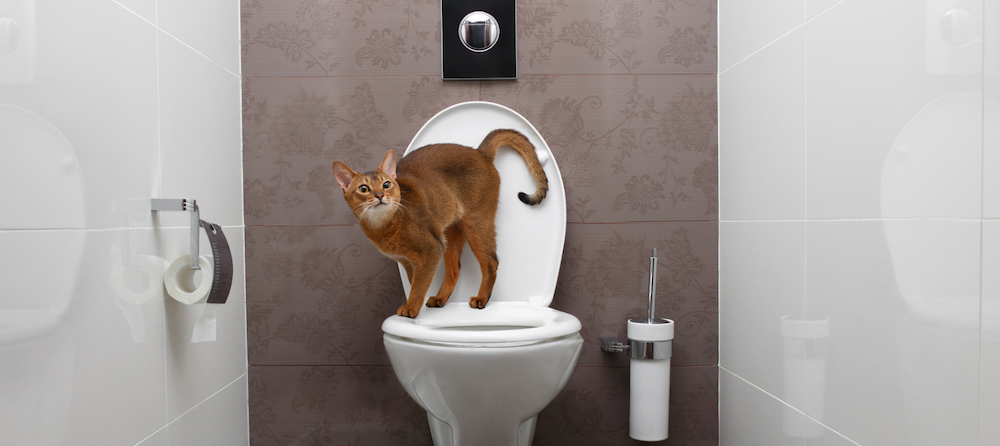Dangers of Flushing Cat Poop Down Your Toilet - Prevent Possible Problems
Dangers of Flushing Cat Poop Down Your Toilet - Prevent Possible Problems
Blog Article
Are you currently interested in guidance concerning Don’t flush cat feces down the toilet?

Intro
As cat owners, it's important to be mindful of how we deal with our feline buddies' waste. While it may appear practical to flush pet cat poop down the commode, this method can have damaging effects for both the setting and human health.
Alternatives to Flushing
Luckily, there are more secure and extra liable means to take care of pet cat poop. Consider the adhering to options:
1. Scoop and Dispose in Trash
One of the most usual technique of disposing of pet cat poop is to scoop it right into a naturally degradable bag and throw it in the garbage. Be sure to use a dedicated clutter scoop and throw away the waste immediately.
2. Usage Biodegradable Litter
Select naturally degradable pet cat clutter made from products such as corn or wheat. These clutters are environmentally friendly and can be safely dealt with in the trash.
3. Bury in the Yard
If you have a lawn, take into consideration burying pet cat waste in a designated location away from vegetable gardens and water resources. Make certain to dig deep sufficient to stop contamination of groundwater.
4. Mount a Pet Waste Disposal System
Purchase a pet dog garbage disposal system especially made for cat waste. These systems use enzymes to break down the waste, minimizing smell and ecological impact.
Health Risks
Along with ecological problems, flushing pet cat waste can additionally pose wellness threats to people. Cat feces might include Toxoplasma gondii, a bloodsucker that can cause toxoplasmosis-- a potentially extreme disease, especially for expectant women and people with damaged body immune systems.
Ecological Impact
Purging cat poop introduces dangerous virus and bloodsuckers right into the water supply, posing a considerable danger to water environments. These pollutants can adversely affect marine life and compromise water top quality.
Final thought
Accountable pet ownership prolongs beyond providing food and sanctuary-- it also entails proper waste monitoring. By refraining from flushing pet cat poop down the commode and choosing different disposal methods, we can lessen our environmental footprint and secure human health and wellness.
Why Can’t I Flush Cat Poop?
It Spreads a Parasite
Cats are frequently infected with a parasite called toxoplasma gondii. The parasite causes an infection called toxoplasmosis. It is usually harmless to cats. The parasite only uses cat poop as a host for its eggs. Otherwise, the cat’s immune system usually keeps the infection at low enough levels to maintain its own health. But it does not stop the develop of eggs. These eggs are tiny and surprisingly tough. They may survive for a year before they begin to grow. But that’s the problem.
Our wastewater system is not designed to deal with toxoplasmosis eggs. Instead, most eggs will flush from your toilet into sewers and wastewater management plants. After the sewage is treated for many other harmful things in it, it is typically released into local rivers, lakes, or oceans. Here, the toxoplasmosis eggs can find new hosts, including starfish, crabs, otters, and many other wildlife. For many, this is a significant risk to their health. Toxoplasmosis can also end up infecting water sources that are important for agriculture, which means our deer, pigs, and sheep can get infected too.
Is There Risk to Humans?
There can be a risk to human life from flushing cat poop down the toilet. If you do so, the parasites from your cat’s poop can end up in shellfish, game animals, or livestock. If this meat is then served raw or undercooked, the people who eat it can get sick.
In fact, according to the CDC, 40 million people in the United States are infected with toxoplasma gondii. They get it from exposure to infected seafood, or from some kind of cat poop contamination, like drinking from a stream that is contaminated or touching anything that has come into contact with cat poop. That includes just cleaning a cat litter box.
Most people who get infected with these parasites will not develop any symptoms. However, for pregnant women or for those with compromised immune systems, the parasite can cause severe health problems.
How to Handle Cat Poop
The best way to handle cat poop is actually to clean the box more often. The eggs that the parasite sheds will not become active until one to five days after the cat poops. That means that if you clean daily, you’re much less likely to come into direct contact with infectious eggs.
That said, always dispose of cat poop in the garbage and not down the toilet. Wash your hands before and after you clean the litter box, and bring the bag of poop right outside to your garbage bins.
https://trenchlesssolutionsusa.com/why-cant-i-flush-cat-poop/

I'm certainly very focused on Don’t flush cat feces down the toilet and I really hope you enjoyed reading the entire blog posting. Do you know about anybody else who is looking into the topic? Do not hesitate to promote it. Thanks a bunch for your time. Visit again soon.
Make An Appointment Report this page